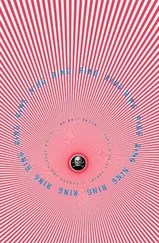1 ...8 9 10 12 13 14 ...69 First, it was an RNA retrovirus that actually caused normal cells to become cancer cells. Thus, anyone infected with the virus ran the risk of developing cancer, regardless of whether or not they had been exposed to carcinogens. However, there was room for individual variation: there were confirmed cases, though only a few, of infected people who were mere carriers, never developing cancer themselves. It took on average three to five years from the time of infection for the cancer to grow large enough to be detected clinically, although the degree of individual variation in this was great.
Second, the cancer was contracted through the direct introduction of virally-infected lymphocytes into the body. That is, it was not spread through the air, but through sexual contact, blood transfusions, breastfeeding, and similar contact. Thus, it was not what would be called highly contagious. But there was no definitive evidence to say that it would not at some point in the future become transmissible through the air. This virus mutated with frightening speed.
Due to the similarity in the manner of its transmission, some scholars speculated that the new virus was the result of some sort of mutation in the AIDS virus. Perhaps the AIDS virus had sensed that it was about to be eliminated by vaccines, and so had colluded with an existing cancer virus, skilfully changing its appearance. And indeed, there was a nasty resemblance between the two viruses, not only in how they spread, but in the way they nested in cells in the human body.
When the Metastatic Human Cancer Virus, carrying reverse-transcription enzymes, merged with human cellular tissue, the RNA and reverse — transcription enzymes were released to synthesize the double helix of DNA.
Then, this synthesized DNA mingled with normal cellular DNA, turning the cell cancerous. Which was bad enough. But it didn't end there. The cell could now no longer tell the difference between its own DNA and the viral DNA, and so it kept manufacturing the cancer virus and releasing it outside the cell. The released virus made its way into the bloodstream and the lymph stream, where it deviously fought off attacking immune cells while awaiting the chance to move into a new host.
The third characteristic: when the cancer started, almost without exception it metastasized and spread throughout the body with frightful strength. This, of course, was why it was called the Metastatic Human Cancer Virus.
There are benign tumours and malignant ones, and the difference between them lies in the thorny questions of invasiveness and metastasis. A person may develop a tumour and still have no reason to fear, as long as it doesn't spread through the surrounding area, move into the blood and lymphatic vessels, and metastasize.
But this metastatic cancer spread through rapid reproduction and extreme invasiveness, and was highly resistant to the immune-system attacks it experienced as it circulated through the lymph and blood streams. It was much more likely than normal cancer to survive in the circulatory system.
As a result, anyone who came down with this cancer had to assume a 100 % probability that it would metastasize. The question of whether or not one survives cancer can be restated in terms of whether or not one can prevent that cancer from metastasizing. With a 100 % chance of metastasis, it was essentially impossible to hope for a complete recovery from MHC.
The fourth characteristic was that the cancer cells created by this virus were immortal-they would live forever if their host didn't die.
Normal human cells have a limit to the number of times they can divide over the course of their existence-just like humans themselves, they have a certain span of life allotted to them at birth. For example, by the time a person becomes an adult, his or her nerve cells have lost their ability to reproduce themselves, so that they are no longer replenished. It might be said that nerve cells have the same lifespan as humans do.
In this way, the aging and death of cells is intimately connected with the question of human lifespan. But these cancer cells, when removed from a host and sustained in a culture fluid, went on dividing infinitely-they would never die.
There were certain religionists who pointed to this and spoke of it in a prophetic vein, saying, If we could harness the power of these cancer cells and transfer it to normal cells, we would be able to achieve immortality - we’d never grow old.
But of course these were nothing but amateurish delusions. It was paradoxical that cells which had achieved immortality would then kill their human hosts, assuring that they themselves would die. But it was a paradox that, by and large, people managed to accept.
It was the rainy season, early summer of the year before Kaoru was to take his national examinations, and every day was a busy one for him. Visiting his dad and working a part-time job took up so much of his life that he barely had time to look after his mother's mental state-much less study.
If left to her own devices, his mother would try to get her hands on anything that claimed to be effective against cancer; Kaoru had to keep a constant watch so it didn't get out of control.
Hideyuki didn't approve of his son spending so much energy on his part-time job. He felt that his son should concentrate on studying, and that splitting his time between that and working was essentially a waste. The idea that Kaoru was doing it on account of his own illness irritated him even more: Hideyuki insisted that he could pay for Kaoru's school expenses, that they had enough money in savings. As far as talking big went, he was as healthy as ever; but the optimism in his words was Kaoru's salvation.
In reality, Kaoru was the one who held the family's finances in his hands, and he knew that they didn't have much to spare. He had to keep his job. But of course he wasn't about to complain to his father about their budgetary straits. There was nothing to be gained by letting his father know things were tight. So Kaoru lied to Hideyuki, telling him that he worked because he wanted more spending money.
When they were together, Kaoru wanted to set his father's mind as much at ease as possible. It wouldn't do to betray the fact that because his illness had decreased the family's income, Kaoru and his mother were having to squeeze by. Luckily, as a medical student Kaoru had no trouble hanging out his shingle as a tutor, and in fact he made quite a bit of money that way. The hospital connected to Kaoru's medical school had a lot of child patients whose parents didn't want them to fall behind in their studies when they went back to school; tutors were always in demand.
One day early in his summer vacation, Kaoru visited the hospital to tutor a junior high schooler in math and English, and then had a light lunch in the cafeteria. His father was a patient in this very hospital. Kaoru had just heard that there was a possibility that the cancer had spread to his father's lungs; his mood was black. His father had recently gone into his annual litany. This year, he said, we 're going to see those longevity zones in the North American desert. But the words had rung hollow. And then came-as if on cue-the indications that the cancer had spread.
Kaoru was sitting in the cafeteria, sighing over his father's illness and his family's future, when he saw Reiko Sugiura and her son Ryoji.
The cafeteria was on the third floor of the hospital, surrounding a courtyard on three sides; the walls facing the courtyard were of glass. There was a fountain in the courtyard, and sitting at a table in the cafeteria one was eye level with the top of its spray. The cafeteria was so carefully decorated, and its food so pleasant to the taste, that it felt more like a stylish outdoor cafe than part of a hospital. Gazing at the water from the fountain had a truly relaxing effect.
Читать дальше
Конец ознакомительного отрывка
Купить книгу






![Yuriy Ktitorov - Sasha [Love]. Part 1](/books/459553/yuriy-ktitorov-sasha-love-part-1-thumb.webp)





